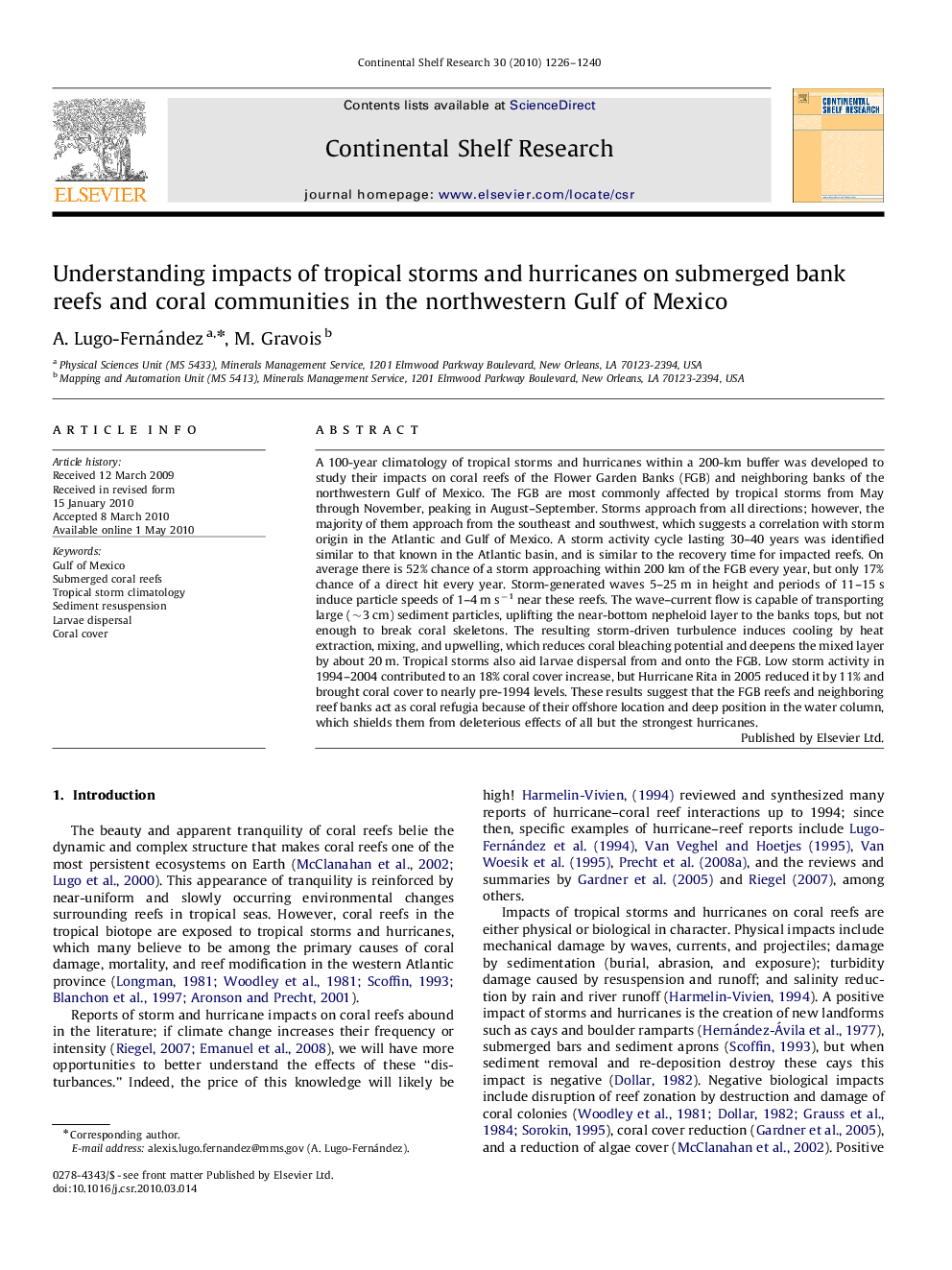| Article ID | Journal | Published Year | Pages | File Type |
|---|---|---|---|---|
| 4532841 | Continental Shelf Research | 2010 | 15 Pages |
A 100-year climatology of tropical storms and hurricanes within a 200-km buffer was developed to study their impacts on coral reefs of the Flower Garden Banks (FGB) and neighboring banks of the northwestern Gulf of Mexico. The FGB are most commonly affected by tropical storms from May through November, peaking in August–September. Storms approach from all directions; however, the majority of them approach from the southeast and southwest, which suggests a correlation with storm origin in the Atlantic and Gulf of Mexico. A storm activity cycle lasting 30–40 years was identified similar to that known in the Atlantic basin, and is similar to the recovery time for impacted reefs. On average there is 52% chance of a storm approaching within 200 km of the FGB every year, but only 17% chance of a direct hit every year. Storm-generated waves 5–25 m in height and periods of 11–15 s induce particle speeds of 1–4 m s−1 near these reefs. The wave–current flow is capable of transporting large (∼3 cm) sediment particles, uplifting the near-bottom nepheloid layer to the banks tops, but not enough to break coral skeletons. The resulting storm-driven turbulence induces cooling by heat extraction, mixing, and upwelling, which reduces coral bleaching potential and deepens the mixed layer by about 20 m. Tropical storms also aid larvae dispersal from and onto the FGB. Low storm activity in 1994–2004 contributed to an 18% coral cover increase, but Hurricane Rita in 2005 reduced it by 11% and brought coral cover to nearly pre-1994 levels. These results suggest that the FGB reefs and neighboring reef banks act as coral refugia because of their offshore location and deep position in the water column, which shields them from deleterious effects of all but the strongest hurricanes.
